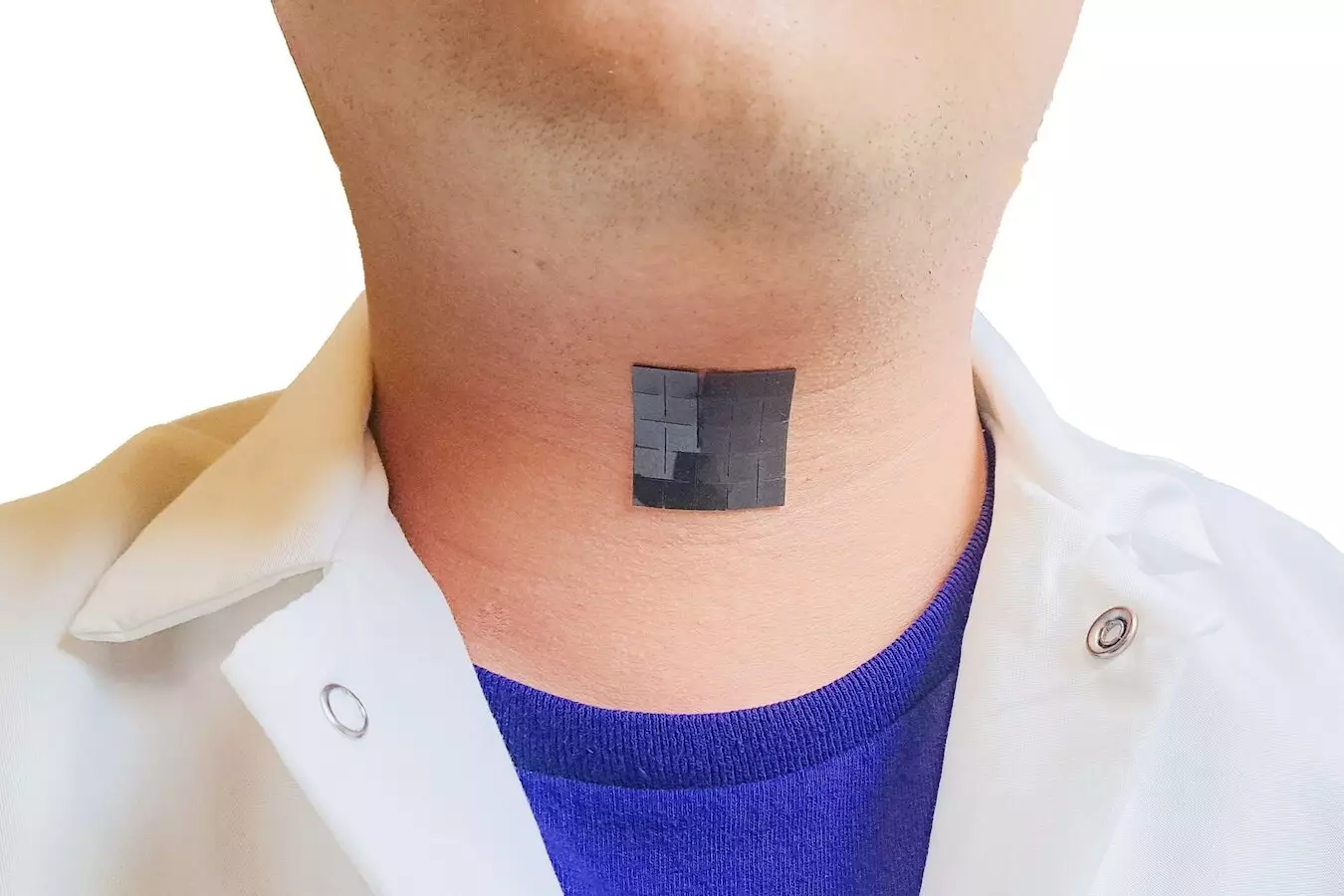In a groundbreaking development, a team of engineers at UCLA have devised a revolutionary bioelectric system aimed at assisting individuals with voice disorders in regaining their ability to speak. This innovative device, measuring just over 1 square inch, has the potential to transform the lives of those with dysfunctional vocal cords, enabling them to communicate effectively once again.
The bioelectric system consists of a soft, thin, stretchy device that can be attached to the skin outside the throat. It operates by detecting movement in the larynx muscles and translating these signals into audible speech with remarkable accuracy, thanks to machine-learning technology. The device is composed of two key components: a self-powered sensing component that converts muscle-generated signals into electrical signals, and an actuation component that translates these electrical signals into voice expression.
The sensing component of the device is constructed using a layer of biocompatible silicone compound with elastic properties and a magnetic induction layer made of copper coils. By utilizing a magnetoelastic sensing mechanism developed by the research team, the device is capable of detecting changes in the magnetic field resulting from the movement of laryngeal muscles. This innovative approach allows for precise and high-fidelity detection of muscle movements, enabling accurate translation into speech signals.
Voice disorders affect a significant portion of the population, with nearly 30% of individuals experiencing such issues in their lifetime. Traditional therapeutic methods often involve invasive procedures and lengthy recovery times. The newly developed bioelectric device offers a non-invasive, wearable solution that can assist patients in communicating during the pre-treatment and post-treatment phases for voice disorders. With its lightweight and portable design, the device provides a convenient and comfortable alternative to existing solutions.
In initial experiments, the device was tested on healthy adults, demonstrating an impressive accuracy rate of 94.68% in translating laryngeal muscle movement into voice signals. Moving forward, the research team plans to expand the device’s vocabulary through machine learning and conduct further testing in individuals with speech disorders. The potential applications of this technology are vast, offering hope to countless individuals who struggle with voice-related conditions.
The development of this bioelectric system represents a significant leap forward in the field of voice restoration. By combining cutting-edge technology with a focus on accessibility and comfort, the UCLA engineering team has created a game-changing device that has the potential to improve the quality of life for individuals with voice disorders. As research continues and the device is refined, the future of voice restoration looks brighter than ever.


Leave a Reply